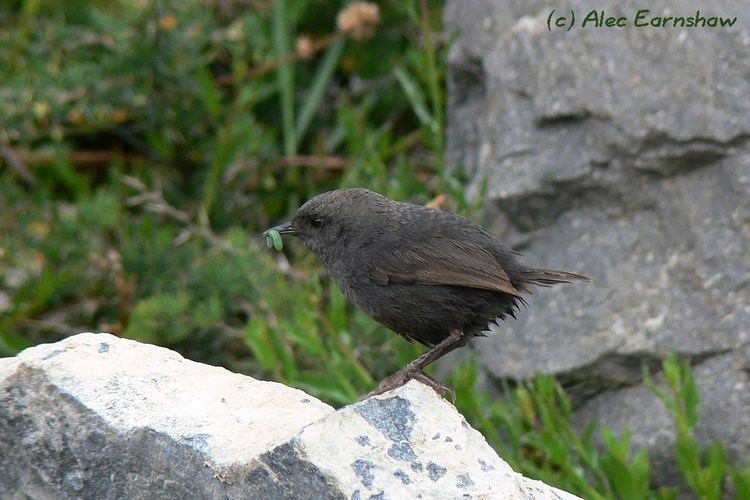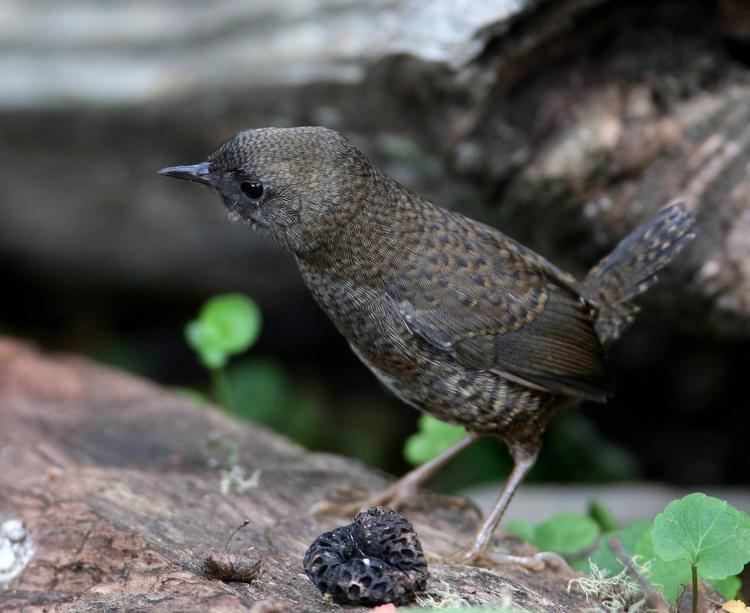Phylum Chordata Rank Species | Family Rhinocryptidae Scientific name Scytalopus magellanicus Higher classification Scytalopus Order Passerine | |
Similar Scytalopus, Ochre‑flanked tapaculo, Dusky tapaculo, Black‑throated huet‑huet, Pteroptochos | ||
The Magellanic tapaculo (Scytalopus magellanicus) is a small passerine bird of southern South America. It belongs to the genus Scytalopus, a genus of tapaculos.
Contents

Taxonomy

The species was often known as the Andean tapaculo in the past and included a number of subspecies distributed along the Andes. These are now treated as species in their own right, leaving the Magellanic tapaculo with no subspecies although birds in the north of its range are larger and darker and may deserve subspecies status.
Description

It is a wren-like bird, 10 to 12 cm in length. The bill is slender and black while the legs are pinkish and fairly long. The tail is short and held erect. The plumage is dark-grey with a chestnut tinge to the flanks, undertail and wings. Some birds have a silvery-white patch on the crown. Juvenile birds are brown with dark barring and usually lack white on the crown. The song is loud, staccato and repetitive.
Distribution and habitat

Its range extends northwards from Tierra del Fuego as far as Valparaíso Region in Chile and San Juan Province in Argentina. Charles Darwin collected a specimen in the Falkland Islands in 1833 or 1834 but there have been no definite records there since. It inhabits dense vegetation near ground-level in forest and woodland where it forages for insects. It often occurs near water and is commonly associated with stands of Chusquea bamboo.
Behaviour
It is terrestrial and prefers to run rather than fly.
Breeding
The domed nest is made of moss, lichens and root-fibres. Two or three white eggs are laid.




